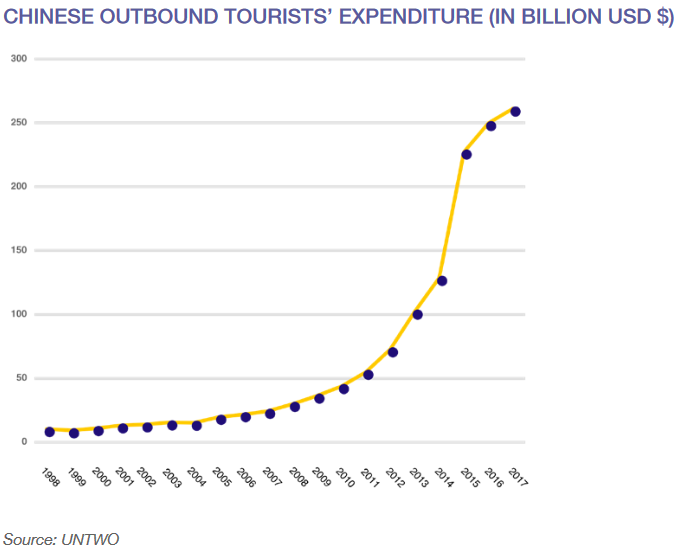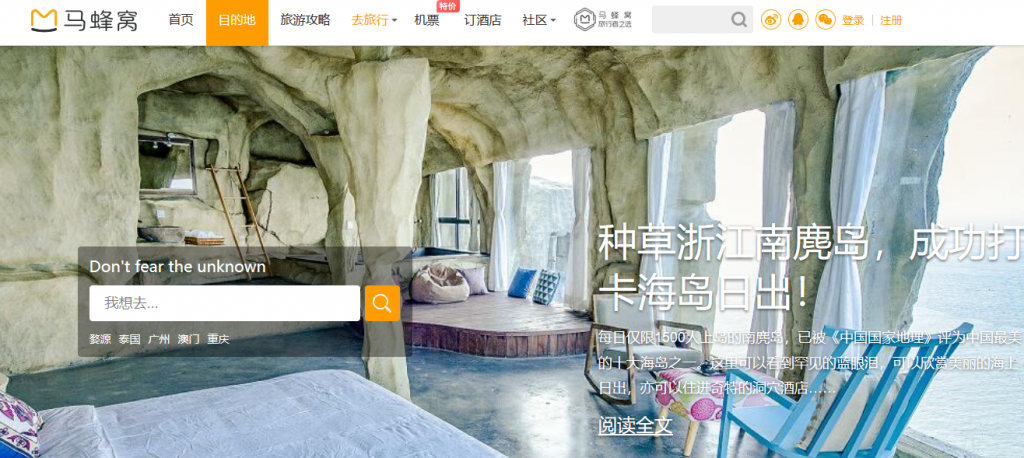
A past tourist era: the arrival of “Free and Independent Travelers” (FITs)
There is a major difference between Chinese and international travelers. The first prefers guided and grouped travel, the latter choosing a more free route. Usually, Chinese tourism met a number of criteria, including “express” tours of must-see monuments, frequenting local luxury shops and buying souvenirs. As a result, the tourism industry, for example Western, has been able to comply with it by offering services adapted to “Chinese travel”. However, the era of the group of Chinese travelers following a guide to the small red flag is already over.
New profiles
A new generation
The emergence of younger, more dynamic and independent travelers, called FITs – Free and Independant Travelers – has been observed. This new generation of adventurers often abandons guided trips. They prefer to travel day-to-day, and use local transport and more atypical accommodation. The generation of FITs is more inclined to master English and less fearful of new crops. They travel mainly to countries geographically close to China, namely Thailand, Japan, Korea, etc. This trend is gradually spreading to Europe and North America.
Travelers looking for adventure
These travelers are, for the most part, “repeaters”, ie Chinese tourists who have already visited the country within 3 years. They already know the places of visit unavoidable and are in search of new experiences. In constant increase, these new tourists now represent more than half of the Chinese tourist volume in the world, with a rate of 40% in France. Although this movement is not a majority for the moment and the “senior” and family travelers still prefer the security of a group and guided trip, the number of FITs continues to grow.
Commercial opportunities to seize
This change is an opportunity for less visited and less accessible tourist accommodation by this group of customers, such as guest houses. Moreover, it is also a new challenge for traditional tourist circles who, at the risk of losing some of their Chinese clientele, will have to adapt their strategy, their communication and their way of interacting with these new travelers. Also, the sharp rise in Chinese tourist spending abroad underscores the importance of understanding and reaching out to this category of travelers. Indeed, spending by Chinese tourists increased from € 46 billion in 2011 to € 238 billion in 2017, an increase of 420% in 6 years.

Past destinations, projects and consumer habits
FIT tourists are paying less attention to the notion of “near” or “far” in their criteria of tourist destination. Indeed, they prefer to ask if a place is “unique” or “fun” before making their choice. These new travel reasons make the evolution of the tourist offer necessary.
New influences…
The reasons pushing them to new destinations have evolved. They are inspired surprisingly trips that can be observed through the American series broadcast in China, with more naturalness, with more picturesque but also more contact with the local population, often at the expense of comfort. In addition, Chinese tourists see travel as an opportunity to discover new flavors.
Also, the nature of the objects purchased during their travels changes. The typical souvenirs that can be found in the shop are of less interest to them, while more atypical memories, more significant of their trip to a particular city or region, are privileged. Note that Chinese tourists have an average annual income of € 16,135 (the average annual income is € 7,538 for the entire Chinese population), FIT tourists often being part of the high average of these revenues. The latter spend between € 600 and € 3,800 for most trips of about a week organized in “package” or not. Nearly 40% of this amount is spent on shopping.

… but some habits persist!
However, if it is a tourist practice that has not been lost over time, it is the Chinese pleasure of bargaining. Uncommon in France, Chinese tourists do not hesitate to haggle the price of their purchases. However, it is recommended not to spontaneously begin a process of negotiation, some travelers preferring to buy “French”. Nevertheless, if your interlocutor tries to negotiate the price, to enter his approach will make him happy and will offer a better image of the shop. Of course, this only concerns sales on the markets and in local provincial stores. This does not apply to luxury shops or restaurants.
A changing group structure
Previously homogenous ages, Chinese tourist groups have diversified in recent years. The general age of tour groups has decreased from an average of 40 to 50 year old travelers to an average age of 35. In addition, children accompanying their parents are more numerous, requiring a new welcome from this clientele, new service proposals but also new products to offer at the same time as those made available to parents.
The generation of thirties is gaining importance with the arrival of new technologies, the spread of smartphones and the high rate of use of applications of all kinds in the daily lives of the Chinese population. Adapting to these new methods of communication and these new means of payment is essential for businesses and service providers. Understanding and adopting them makes it possible to become known and to create a privileged link with this clientele.
The necessary adaptation of providers
Chinese travel agencies have been quick to comply with these usual changes, as evidenced by the rapid increase in online services. These include personalized individual travel offers, enabling a younger, more connected and more fearless generation to stay accompanied while on the move, while gaining autonomy.

Knowing the study of WeChat can be a significant advantage. Indeed, this application is among the most used daily by Chinese tourists, provides a ranking of travel websites, countries, places, shops to visit but also dishes to taste or items to acquire. So, good visibility on WeChat can be a key factor of success in developing a Chinese clientele. In addition, French businesses are almost absent from this type of platform for the moment, quickly adopt this means of communication represents an invaluable opportunity to increase its visibility.
A France in the foreground
Anticipating and adapting to Chinese demand is a major necessity. Indeed, between 2017 and 2018, Europe has become the second most visited tourist destination after Southeast Asia, with twice as many visits as those in North America. In addition, Europe is also the first destination for Chinese tourists to visit in the coming years. Finally, among the world cities, Paris is the second most popular city for Chinese tourists, after London (2017-2018).
In order to stay informed about the latest trends in the Chinese tourism market, it is recommended to establish a targeted watch and consult specialized sites, such as the World Tourism Organization (UNWTO). In addition to the publications available online, the latter organizes several meetings around the world. The next, the 13th UNWTO / PATA forum on tourism, trends and outlook, will be held in China, Guilin, from 17 to 19 October 2019.
Questions ? Contact us!